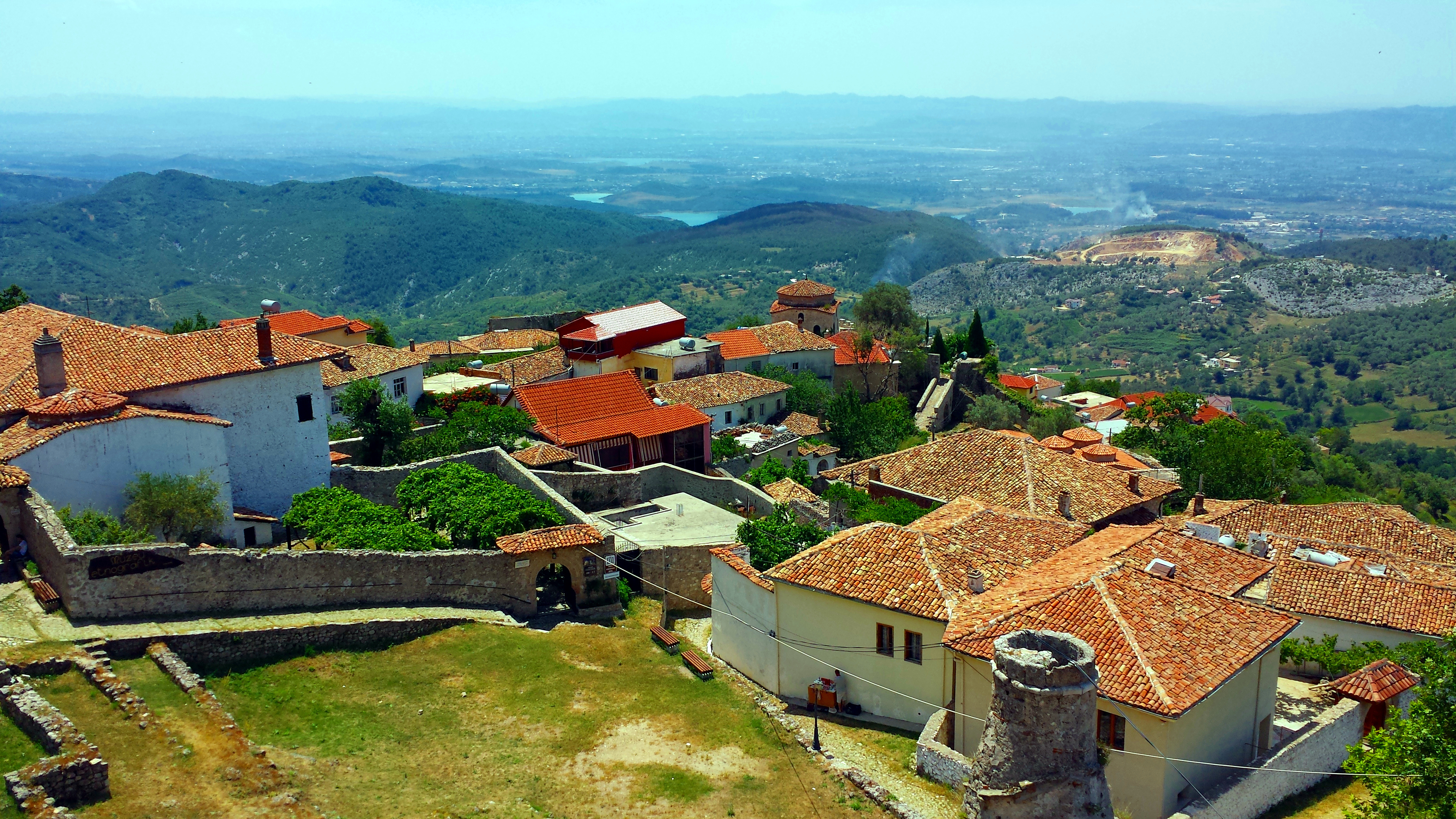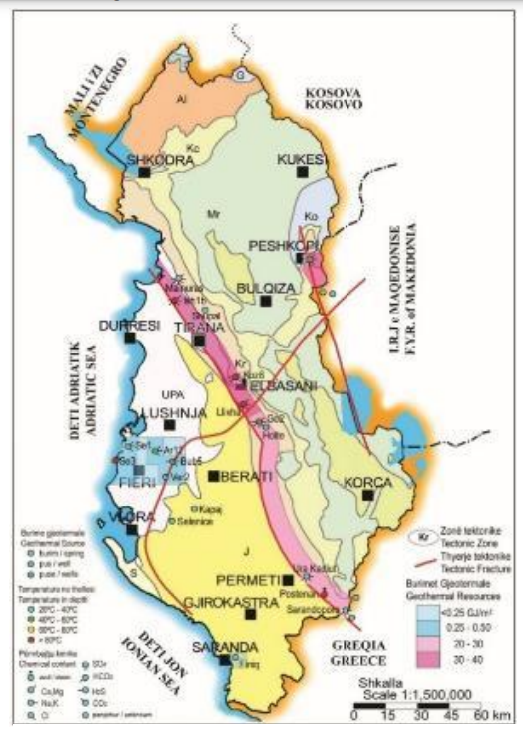
Albania has abundant geothermal resources, and they were largely untapped and underexplored. UNECE helped Albania assess its geothermal potential and develop a roadmap for sustainable utilization, using the United Nations Framework Classification for Resources (UNFC) and the United Nations Resource Management System (UNRMS), which are international standards for managing energy and mineral resources. The project boosted Albania’s energy security and sustainability and supported SDG 7 (Affordable and clean energy) and SDG 13 (Climate action). Albania also inspired other countries in the region to follow its example and explore their geothermal resources.
Albania’s growing energy demand and carbon footprint reduction present a dual challenge. The country’s electricity generation mainly comes from hydropower, which is vulnerable to climate variability and droughts. Fossil fuels, mostly imported from neighbouring countries, account for the remaining 10 per cent, exposing Albania to supply disruptions and price fluctuations. Albania needs to tap into its abundant renewable energy resources, especially geothermal energy, to diversify its energy mix and enhance its energy security.
Geothermal energy is a clean, renewable and reliable source with significant potential in Albania. This potential remains largely untapped due to the lack of data, technology and investment. In 2023, Albania received support from UNECE’s Regular Programme on Technical Cooperation (RPTC) to assess its geothermal potential using international standards for the classification and management of energy and mineral resources and enhance stakeholders’ and public’s capacity and awareness of the benefits and challenges of geothermal energy development.
Albania has three major geothermal regions with different characteristics and opportunities for geothermal energy development (Figure 12). The Kruja geothermal zone, which extends 180 kilometres from the Adriatic Sea to the Greek border, has seven hot spring groups and three boreholes that produce hot, mineralized water at temperatures up to 80°C. The Ardenica geothermal zone, located in Albania’s coastal area, has six boreholes that discharge waters at temperatures from 32 to 67°C from depths between 1200 and 2425 meters. The Peshkopia geothermal zone, located in the Northeast of Albania, has a group of thermal springs that flow at 43.5°C on a river slope and a significant yield of cold mineralized water springs in the riverbed.

The project followed a systematic and participatory approach to assess and manage the geothermal resources in Albania, using the UNFC and UNRMS as the guiding frameworks. The project involved several activities, such as:
Collected and analyzed data on the geothermal resources in Albania through a desk study and a field survey.
Developed a geothermal resource portfolio for Albania, which classified and categorized the geothermal resources according to their feasibility and maturity using UNFC.
Prepared a case study report, which presented the results and findings of the geothermal resource assessment and portfolio and provided recommendations for further exploration and development in alignment with the UNRMS.
Organized a national workshop, which brought together various stakeholders to discuss and validate the case study report and to exchange knowledge and experiences on geothermal energy development.
Developed a roadmap for geothermal energy development in Albania, which outlined the vision, goals, objectives, actions and indicators for the sustainable utilization of geothermal resources, aligned with the national and regional energy strategies and policies and the SDGs.
Communicated and disseminated the results and outputs of the project to the relevant stakeholders and the public through various channels and platforms.
The project revealed valuable lessons learned and best practices for geothermal energy development in Albania, which could also be helpful for other countries with similar geothermal potential and challenges. The project showed that:
UNFC and UNRMS are helpful and practical tools for assessing and managing geothermal resources, as they provide a holistic and harmonized approach that considers the technical, economic, social and environmental aspects of the resources and their alignment with the SDGs.
The involvement and engagement of the stakeholders and the public throughout the project cycle is essential for the success and sustainability of the geothermal energy development, as it ensures the ownership, participation and acceptance of the project outcomes and outputs.
Collaboration and coordination among the stakeholders at the national and regional levels is crucial for geothermal energy development, as it enables the sharing of data, knowledge, experiences and resources and creates synergies and opportunities for joint actions and initiatives.
The communication and dissemination of the project results and outputs are essential for geothermal energy development, as they raise the stakeholders’ and public’s awareness and interest in geothermal resources and their potential benefits and challenges, and promote advocacy and support for geothermal energy development.
The project achieved remarkable results and impacts regarding Albania’s technical and socio-economic aspects of geothermal energy development. The project proposed various direct-use applications for geothermal resources, such as district heating, spa, greenhouse, aquaculture, and mineral salt extraction. These applications could provide economic, social and environmental benefits for the local communities and industries and contribute to achieving the SDGs. The project also:
Provided the first comprehensive and systematic assessment of the geothermal resource potential in Albania, using the UNFC and UNRMS as the common language and framework for classifying and managing the resources.
Increased the stakeholders and the public’s knowledge of geothermal resources and their potential benefits and challenges for the energy sector and Albanian society.
Enhanced the capacity and skills of the stakeholders to apply the UNFC and UNRMS to their geothermal resources and to plan and implement geothermal energy projects sustainably.
Fostered dialogue and cooperation among the stakeholders at the national and regional levels and facilitated the exchange of information and best practices on geothermal energy development.
Supported the development and implementation of the national and regional energy strategies and policies and contributed to the achievement of SDG 7 (Affordable and clean energy), SDG 13 (Climate action) and SDG 17 (Partnerships for the goals).